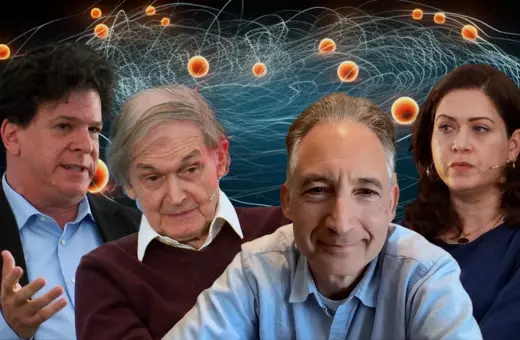Quantum mechanics is extremely successful and extremely weird. Its weirdness has made it controversial. It doesn’t even try to do what we often think scientific theories must do: it doesn’t try to describe reality. Karl Popper thought this went against science’s very essence. But philosopher Marij van Strien argues here that quantum mechanics’ success shows that science has no fixed rules: progress is often made by breaking from conventional standards of rationality. This needn’t leave us in anarchy, unable to distinguish between good and bad science, as some fear: we just need to be more pragmatic when it comes to judging whether a theory is any good.
The theory of quantum mechanics is extremely successful: it accounts for a large range of experimental results, enables highly accurate predictions and has led to many technological applications, such as lasers, the semiconductors found in every computer, nuclear energy and nuclear weapons. At the same time, it is a strange theory. People often quote Richard Feynman, who once said, “I think I can safely say that nobody understands quantum mechanics.” It has weird and counterintuitive implications, and there has always been an air of mystery about it; it is telling how often the term “quantum” appears in alternative medicine, self-help books, and texts on spirituality and mysticism.
___
How can a theory be so successful without bringing actual understanding?
___
Quantum mechanics deals with processes at the atomic and subatomic scale. Part of what makes this theory strange is that it does not do what we usually expect from a scientific theory: it does not give a description of processes taking place in nature, but merely tells you how to calculate probabilities of measurement outcomes. For example, you can calculate the probability that if you measure the position of a particle, such as an electron, you will find it at a particular location. However, you will not be able to determine where it will be found exactly: quantum mechanics is indeterministic and gives you no more than a probability. Furthermore, you cannot simply assume the particle always has a well-defined position. Heisenberg’s uncertainty principle says that we cannot simultaneously assign an exact position and an exact momentum to a particle: the more precisely the momentum of a particle is given, the less precisely its position can be specified, and vice versa. In the double-slit experiment, particles are fired through slits towards a screen: you can specify where they start and where they end up, but you cannot specify where they were in between without getting into problems. In short: the equations of quantum mechanics cannot straightforwardly be interpreted as describing physical processes, and it is not easy to supplement them with a story of what is actually going on at the atomic level . SUGGESTED VIEWING Quantum and the unknowable universe With Slavoj Žižek, Roger Penrose, Sabine Hossenfelder, Güneş Taylor
It is partly for this reason that many have felt that despite its impressive successes, quantum mechanics fails to offer an actual understanding of what happens at the quantum scale – which raises the question whether this can be understood. This is a puzzling situation: how can a theory be so successful without bringing actual understanding?






















Join the conversation